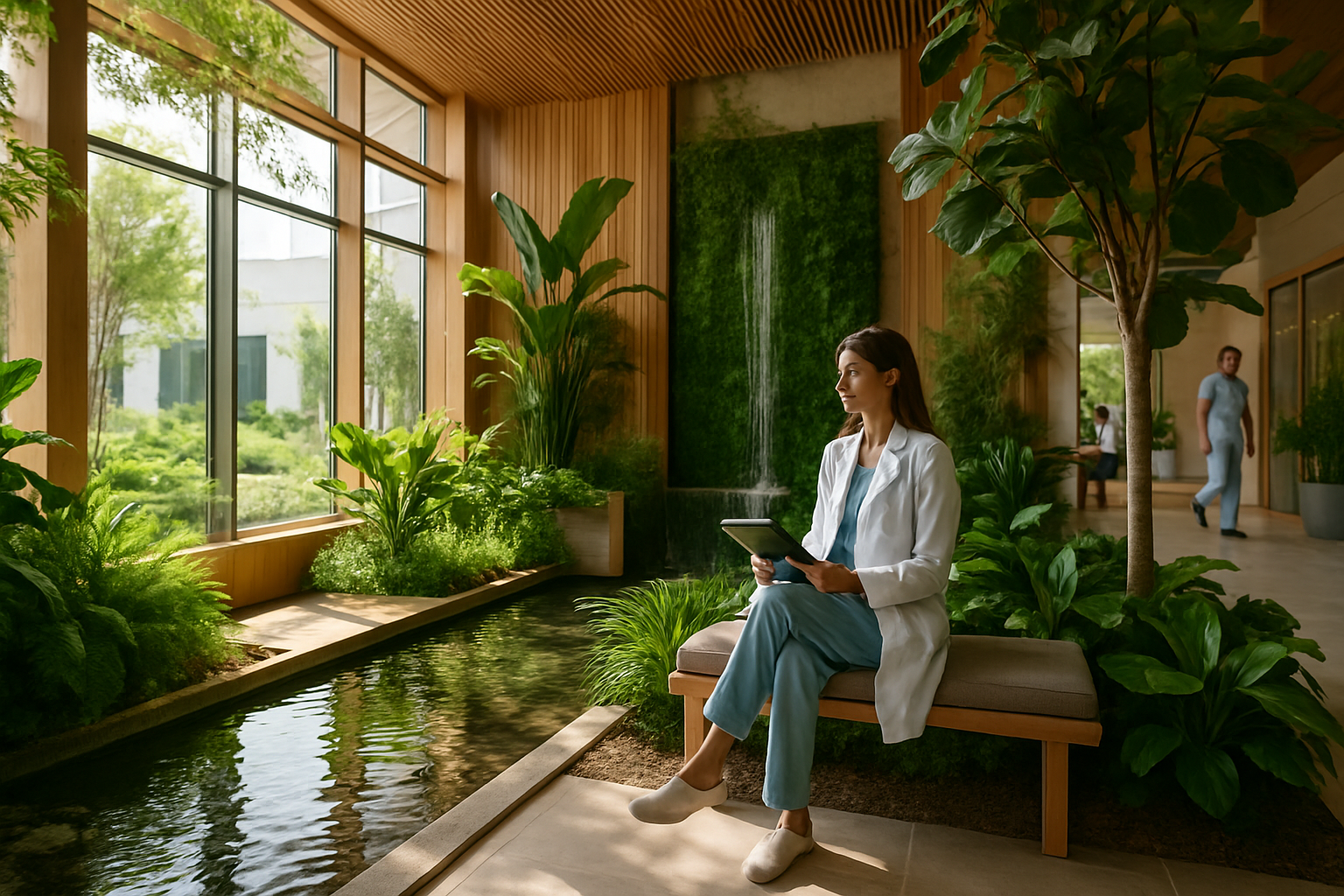Biophilic Design: Revolutionizing Health Through Nature-Inspired Spaces
Can your home or office actually make you healthier? Imagine a workspace bathed in natural light, adorned with lush greenery, and mimicking the gentle curves of nature. This isn't just aesthetic – it's a powerful health intervention rooted in our innate connection to the natural world. Welcome to the world of biophilic design, where architecture meets biology to create environments that boost our well-being from the inside out.

Studies conducted at the University of Oregon found that 10% of employee absences could be attributed to architectural elements that lacked connection to nature. Conversely, incorporating biophilic design principles led to a 15% increase in reported well-being and a 6% boost in productivity.
Key Elements of Biophilic Design
Biophilic design incorporates several key elements to create spaces that resonate with our evolutionary preferences:
-
Direct nature experiences: This includes incorporating indoor plants, water features, and natural light.
-
Indirect nature experiences: Using natural materials, colors, and patterns that evoke nature.
-
Space and place conditions: Creating environments that mimic natural settings, such as changes in light throughout the day or varying temperatures.
Health Benefits of Biophilic Spaces
The impact of biophilic design on health is profound and multifaceted:
-
Stress Reduction: A study in the International Journal of Environmental Research and Public Health found that office workers in biophilic environments reported a 15% decrease in stress levels.
-
Improved Cognitive Function: Research from the University of Melbourne showed that brief interactions with nature can improve working memory, cognitive flexibility, and attentional control.
-
Enhanced Sleep Quality: Exposure to natural light cycles helps regulate our circadian rhythms, leading to better sleep patterns.
-
Accelerated Healing: A landmark study by Roger Ulrich found that hospital patients with views of nature recovered faster and required less pain medication than those facing brick walls.
Implementing Biophilic Design in Daily Life
While large-scale architectural changes may not be feasible for everyone, there are numerous ways to incorporate biophilic principles into your daily environment:
-
Maximize natural light: Position your workspace near windows and use light-filtering curtains instead of heavy drapes.
-
Introduce plants: Even small potted plants can significantly improve air quality and provide a visual connection to nature.
-
Use natural materials: Opt for wooden furniture, stone accents, or bamboo textiles to bring natural textures into your space.
-
Incorporate nature-inspired art: Landscapes, botanical prints, or nature photography can evoke the calming effects of outdoor environments.
-
Create sensory variability: Use essential oils with natural scents, play nature sounds, or vary room temperature slightly to mimic outdoor conditions.
Biophilic Design in Urban Planning
The principles of biophilic design are increasingly being applied to urban planning, with cities worldwide recognizing the health benefits of green spaces. Singapore’s Gardens by the Bay and New York’s High Line are prime examples of how urban areas can be transformed into nature-rich environments that promote public health.
Urban planners are now focusing on creating green corridors, rooftop gardens, and vertical forests to bring nature back into city centers. These initiatives not only improve air quality and biodiversity but also provide residents with accessible green spaces that enhance mental and physical well-being.
The Future of Biophilic Design in Healthcare
Healthcare facilities are at the forefront of adopting biophilic design principles. Hospitals and clinics are moving away from sterile, windowless environments towards spaces that incorporate healing gardens, natural light, and nature-inspired artwork.
The Khoo Teck Puat Hospital in Singapore is a pioneering example, featuring a central garden courtyard, green roofs, and cascading planted terraces. Patients report feeling more relaxed and recovering faster in these nature-integrated settings.
Biophilic Design: Quick Tips for Healthier Spaces
-
Introduce a variety of plant species to improve air quality and visual interest
-
Use natural color palettes inspired by earth, sky, and vegetation
-
Install a small indoor water feature for auditory and visual relaxation
-
Opt for organic shapes in furniture and decor to mimic natural forms
-
Create a nature-viewing area with comfortable seating near windows
-
Use dynamic lighting systems that change throughout the day to mimic natural light cycles
-
Incorporate textured surfaces that invite touch and evoke natural materials
As we continue to uncover the profound impact of our surroundings on our health, biophilic design stands out as a powerful tool for enhancing well-being. By reconnecting with nature through thoughtful design, we can create spaces that not only look beautiful but actively contribute to our physical and mental health. Whether through grand architectural projects or simple home improvements, embracing biophilic principles offers a path to healthier, more vibrant living environments.





